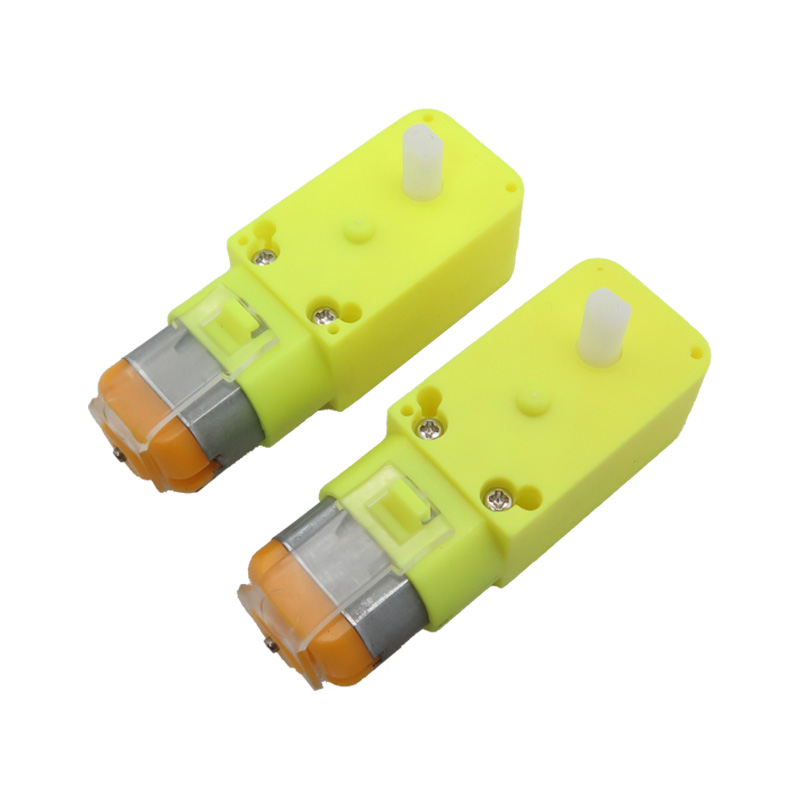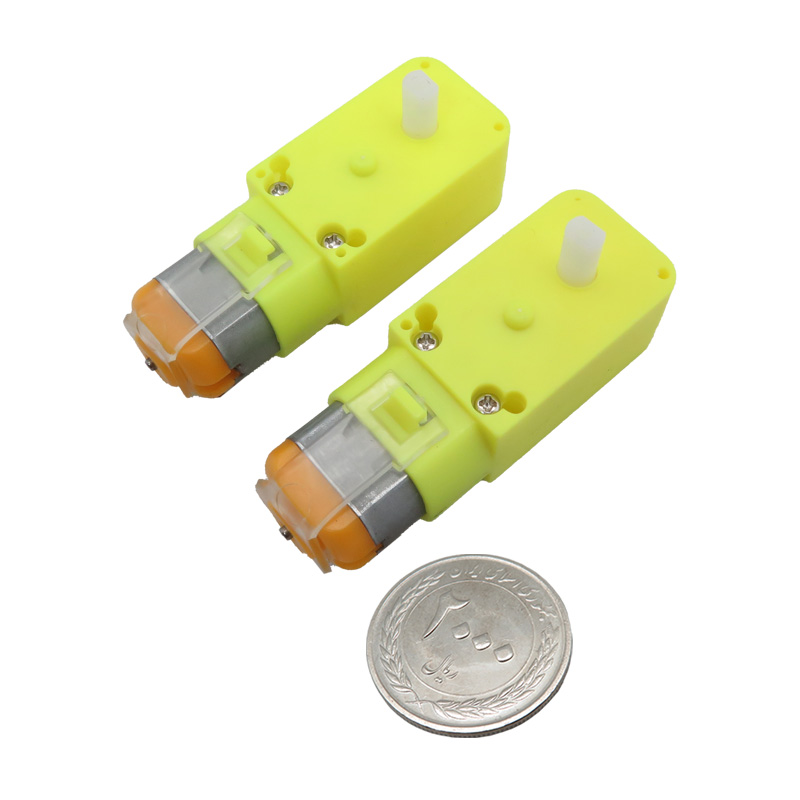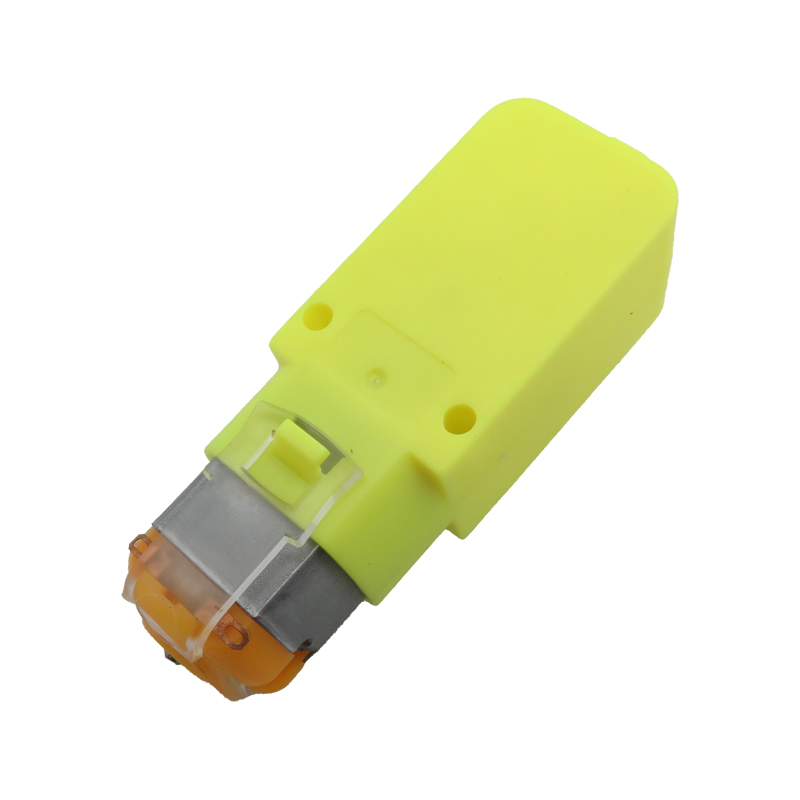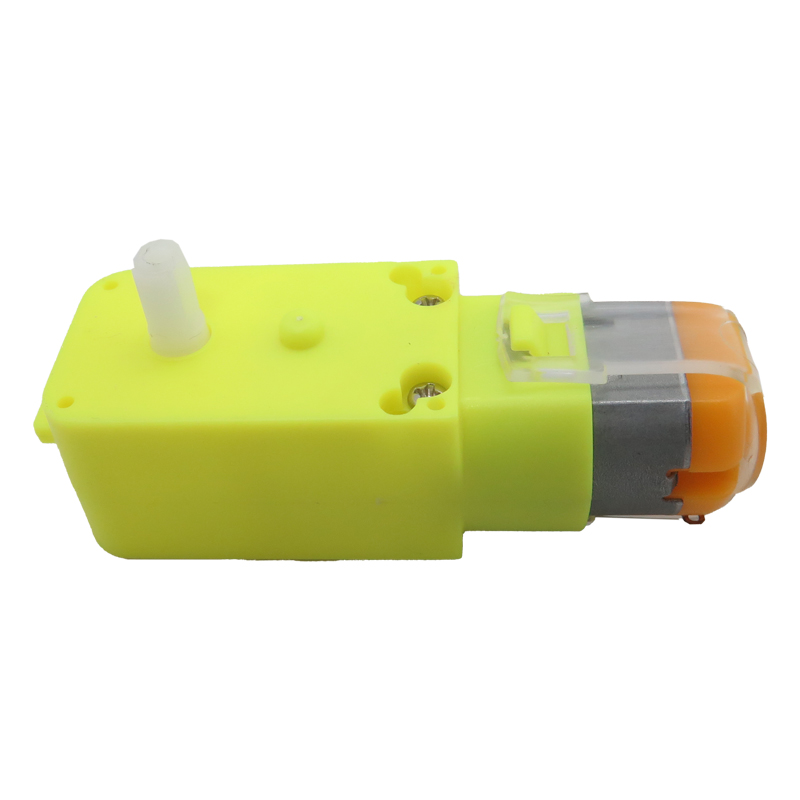86,340 تومان
در حال حاضر موجود نمی باشد
موجودی در حال ارسال به انبار
-
500 عدد24 روز پیش
علاقه مندان : 8 نفر
وضعیت : فعال
تعداد مرجوعی : 0
دنبال کنندگان : 13 نفر
قدمت : 12 سال و 3 ماه و 18 روز
وزن : 60 گرم
کل فروش : 4943 عدد
تعداد سفارش ها : 489 سفارش
3 از 5.0 با 10 رای
موتور DC گیربکس دار 1:120 تک محور
موتور DC گیربکس دار 1:120 تک محور به علت اینکه این نوع موتور از جریان مستقیم برای تغذیه خود استفاده می کند DC نامیده می شود.
وظیفه اصلی موتور DC تبدیل انرژی الکتریکی به انرژی مکانیکی است که این کار را به کمک نیروی مغناطیسی انجام می شود.
در صورتی که در هنگام کار با موتور DC به قدرت یا گشتاور بیشتری نیاز باشد، با اضافه کردن گیربکس به موتور به آسانی این امر امکان پذیر است. در واقع گیربکس سرعت و گشتاور را به یکدیگر تبدیل می کند یعنی می تواند از گشتاور کم کند و به سرعت بیافزاید و یا برعکس از سرعت کم کند و به گشتاور بیفزاید.
موتور گیربکس تک محوره دارای یک شافت می باشد .
ولتاژ کاری این موتور بین 6 ~ 3 ولت می باشد و در هر سطح ولتاژی، موتور دارای عملکرد متفاوتی می باشد.
کاربرد موتور DC تک محور :
- در صنایع رباتیک و ساخت ماشین های اسباب بازی استفاده می گردد.
مشخصات Gear-Motor-120 :
- ولتاژ : 3 ولت
- جریان بدون بار: ≤170mA
- سرعت در حالت بی باری: 10 ± 55 دور در دقیقه
- ولتاژ : 6 ولت
- جریان بدون بار: ≤250mA
- سرعت بدون بار: 115 ± 10% دور در دقیقه
Description:
A Gearmotor is a single component that integrates a gear reducer with either an ac or dc electric motor. Gearmotors can deliver high torque at low horsepower or low speed. This is because the gearhead functions as a torque multiplier and can allow small motors to generate higher torque. The addition of a gear head to a motor reduces the speed while increasing the torque output. The most important parameters in regards to gear motors are speed (rpm), torque (lb-in) and efficiency (%). In order to select the most suitable gear motor for your application, you must first compute the load, speed and torque requirements for your application.
Gearmotors can be built with either ac or dc motors. In addition, a common way to categorize gear motors is by the type of gearing used. So there are a number of choices for the gear reducer. Common types of gears that can be paired with a motor to form a complete Gearmotor include bevel, helical, hypoid, spur and worm gears.
Another way to classify gear motors is by the physical arrangement of the final complete unit. For instance, there are so-called inline gearmotors where the gear shaft is parallel with the motor shaft, also called a parallel shaft. These can either be offset from the output shaft or completely in line with it. Another configuration is the right-angle Gearmotor, where the output shaft is at a 90-degree angle to the motor shaft. Some also refer to a planetary configuration, which describes the configuration of the gears inside the Gearmotor. Because of the arrangement of the gears inside the motor in a planetary fashion, these types of gear motors tend to be more compact in size and also offer high torque density. Shaft arrangement is generally inline, which eliminates any issues with shaft offset.
Features:
Voltage: 3V
No-load Current: ≤170mA
No-load Speed: 55 ±10% rpm
Voltage: 6V
No-load Current: ≤250mA
No-load Speed: 115 ±10% rpm



